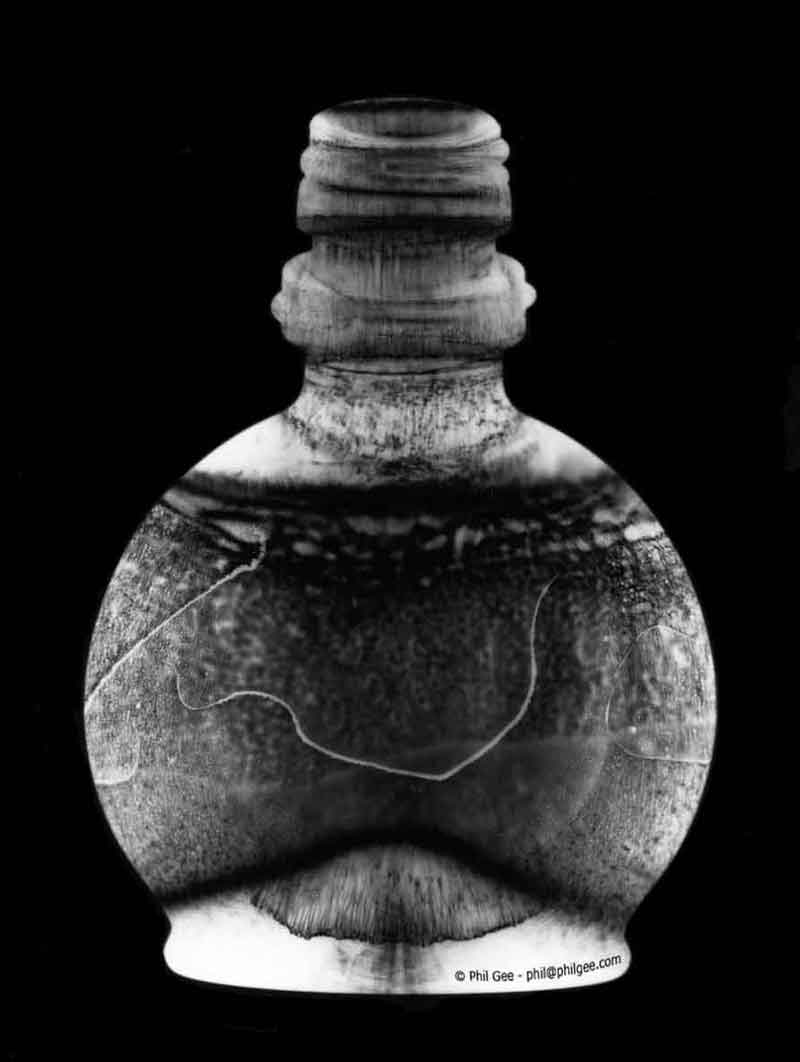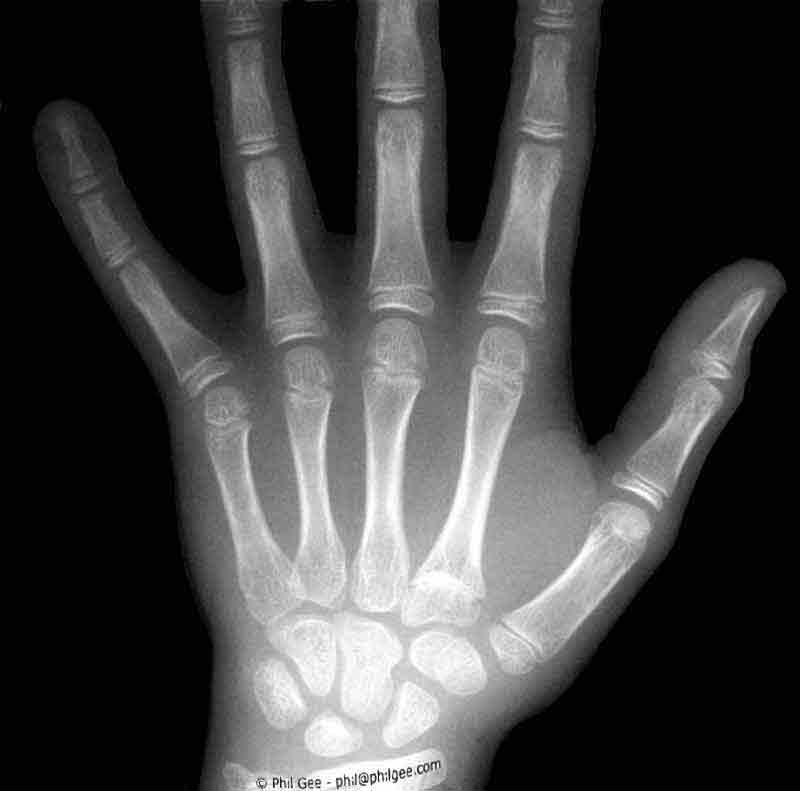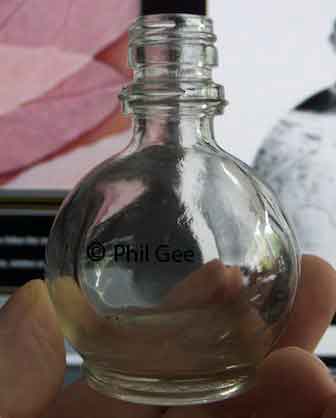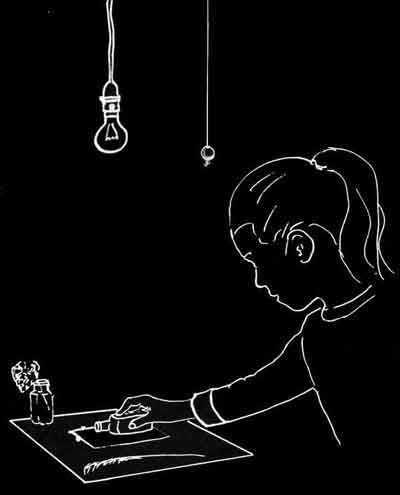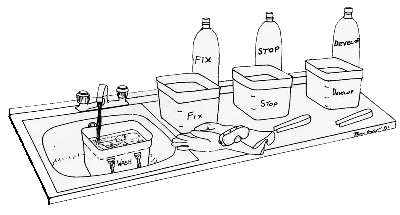A Photogram is an image created without the use of a camera, lens or negative on photosensitive material, in the above example visible white light was used but other wave lengths from the electromagnetic spectrum can be used notably X-rays.
The resulting image is a 'negative' in the conventional sense where the dark areas represent maximum exposure, the white areas minimum and the grays proportional amounts dependent upon the density, opacity, refractivity of the subject and the amount of exposure given.
In the above image was processed using chemical developer (Developing Out) unlike Sun Prints where the action of the Sun on the photosensitive material causes the image to appear (Printing Out). However modern day X-ray techniques use digital imaging with the plate image being displayed on a digital monitor.
Actual Bottle and Hand featured in the above photograms |
|
For more examples click on: |
|
Exposure
A high contrast photogram is the easiest to produce you arrange object/s on the photosensitive material either in complete darkness or safe light conditions. You then expose with sufficient light to give the maximum black to the exposed portions after processing those areas not exposed will retain the base white of the paper. It is possible to control the density of the tone produced by varying the intensity of the light and the time that the emulsion is exposed or by placing and /or removing , or just moving objects during exposure |
|
Processing PrintAlways refer to manufacturers safety data sheets and ensure you are familiar with any recommendations they make. Ensure you have gloves goggles and aprons available. Processing needs to be carried out under 'Safe Light' conditions so ensure users are familiar with working under these conditions and have practiced safety drill. Equipment required is simple a source of running water is ideal if you limit print size to 5x7 then 4lite plastic tubs are sufficient |
|
| For more precise control of the tone produced you need to produce a tonal palette (test strip) for the paper you intend to use. By exposing same to light for set intervals of time and developing. The resulting tonal palette giving a gradation from solid black to base white |
